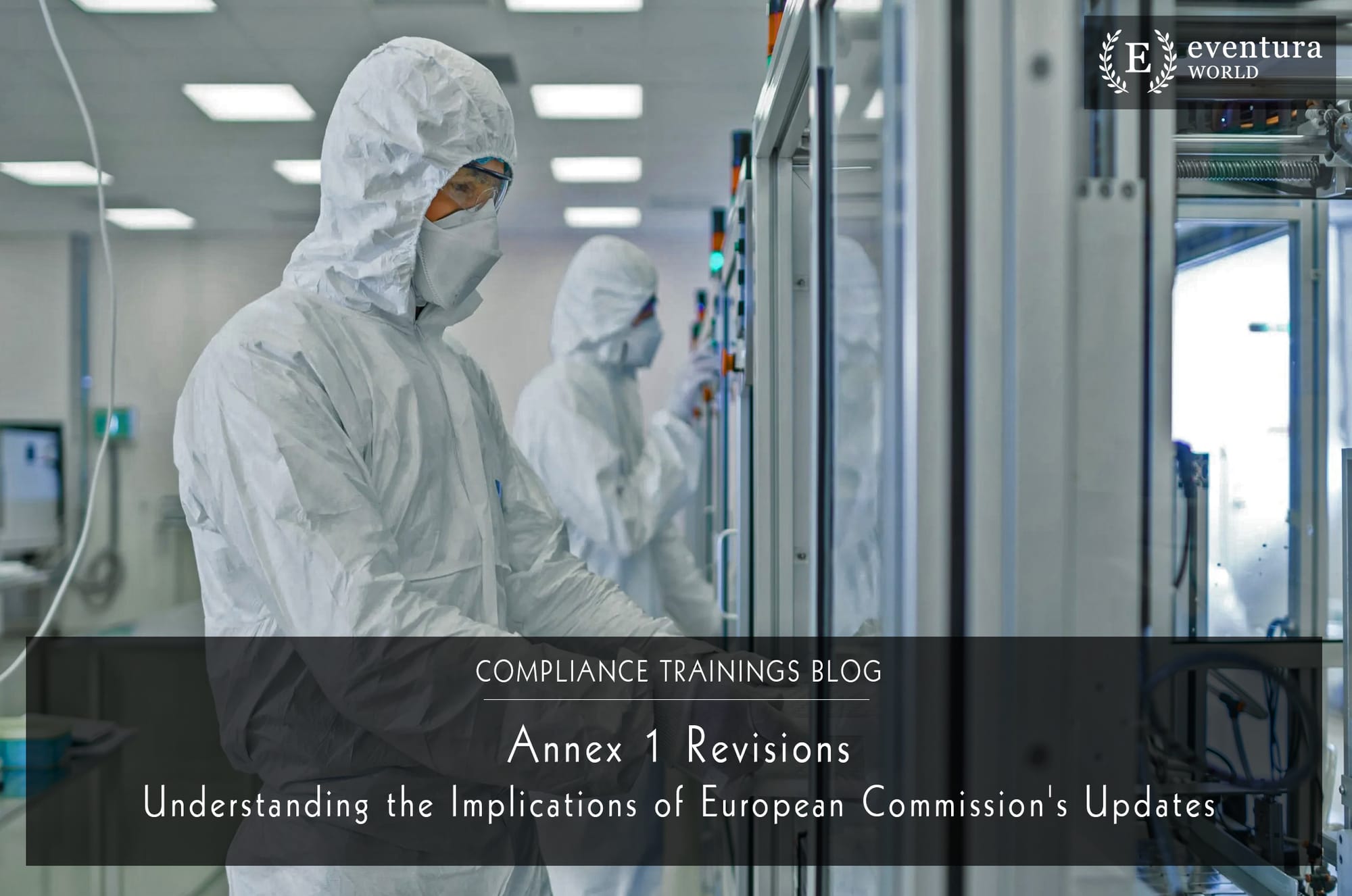Annex 1 Revisions: Understanding the Implications of European Commission's Updates

In the pharmaceutical industry, adherence to Good Manufacturing Practices (GMP) is paramount to ensure the quality, safety, and efficacy of medicinal products. The European Commission, responsible for the regulation of pharmaceuticals within the European Union, regularly updates its guidelines to keep pace with advancements and address emerging challenges. One such crucial document is Annex 1, which provides guidelines on the manufacturing of sterile medicinal products. In this blog post, we will delve into the latest revisions made by the European Commission to Annex 1, highlighting key changes and their implications for the industry.
Background and Importance of Annex 1:
Annex 1 of the European Union GMP document provides specific guidance on the production of sterile medicinal products, covering various aspects such as facilities, equipment, validation, environmental monitoring, and personnel. Its aim is to establish a harmonized approach to ensure the highest quality standards throughout the manufacturing process.
Overview of the Latest Revisions:
The European Commission's latest revisions to Annex 1 incorporate several significant updates to align with technological advancements and address current industry challenges. While we encourage you to refer to the official document for complete details, here are some noteworthy highlights:
a. Scope Expansion: The revised Annex 1 extends its scope to include advanced therapeutic medicinal products (ATMPs), such as gene and cell therapies. This reflects the evolving landscape of pharmaceutical manufacturing and ensures that these innovative products meet stringent quality requirements.
b. Quality Risk Management (QRM): The updated document emphasizes the integration of QRM principles into all aspects of sterile product manufacturing. This approach enables manufacturers to proactively identify and mitigate potential risks, ensuring product quality and patient safety.
c. Contamination Control Strategy: Annex 1 emphasizes the importance of implementing a robust contamination control strategy throughout the manufacturing process. It provides detailed guidance on various aspects, including cleanroom design, facility qualification, and monitoring of critical environments.
d. Environmental Monitoring: The revisions address the need for a risk-based approach to environmental monitoring, focusing on critical areas and processes. It emphasizes the use of continuous monitoring systems and real-time data analysis to promptly detect any deviations from acceptable limits.
e. Sterilization Processes: The revised document provides updated guidance on sterilization processes, including aseptic processing, terminal sterilization, and sterilization of equipment and materials. It emphasizes the importance of validation and process control to ensure the efficacy of the sterilization methods employed.
f. Containment and Cross-Contamination: With the increasing production of potent and highly active substances, the revised Annex 1 introduces more comprehensive guidance on containment and control of cross-contamination risks. It emphasizes the use of appropriate equipment, procedures, and personnel training to minimize the potential for product contamination.
Implications for the Pharmaceutical Industry:
The latest revisions to Annex 1 have far-reaching implications for pharmaceutical manufacturers and industry stakeholders. Some key implications include:
a. Enhanced Quality Standards: The revisions raise the bar for quality standards in the manufacturing of sterile medicinal products. Manufacturers will need to invest in state-of-the-art facilities, advanced technologies, and robust quality management systems to meet the updated requirements.
b. Compliance Challenges: The implementation of the revised Annex 1 may pose challenges for manufacturers, especially those with existing facilities that need significant upgrades to comply with the new guidelines. It will require careful planning, investment, and collaboration between regulatory authorities and manufacturers.
c. Innovation and Advanced Therapies: The inclusion of ATMPs within the scope of Annex 1 reflects the European Commission's commitment to fostering innovation in the pharmaceutical industry. It ensures that advanced therapies meet the same rigorous quality standards as traditional medicinal products.
d. Global Harmonization: The revisions to Annex 1 align with international guidelines, such as those issued by the World Health Organization (WHO) and the International Council for Harmonization of Technical Requirements for Pharmaceuticals for Human Use (ICH). This harmonization promotes global consistency and facilitates mutual recognition of regulatory inspections.
Conclusion:
The European Commission's latest revisions to Annex 1 represent a significant milestone in ensuring the highest quality standards for sterile medicinal products. By incorporating technological advancements, emphasizing risk management, and addressing emerging challenges, these revisions are poised to improve the manufacturing practices and enhance patient safety. Pharmaceutical manufacturers must carefully review and implement the updated guidelines to remain compliant and maintain their commitment to quality and innovation in the ever-evolving pharmaceutical landscape.
.